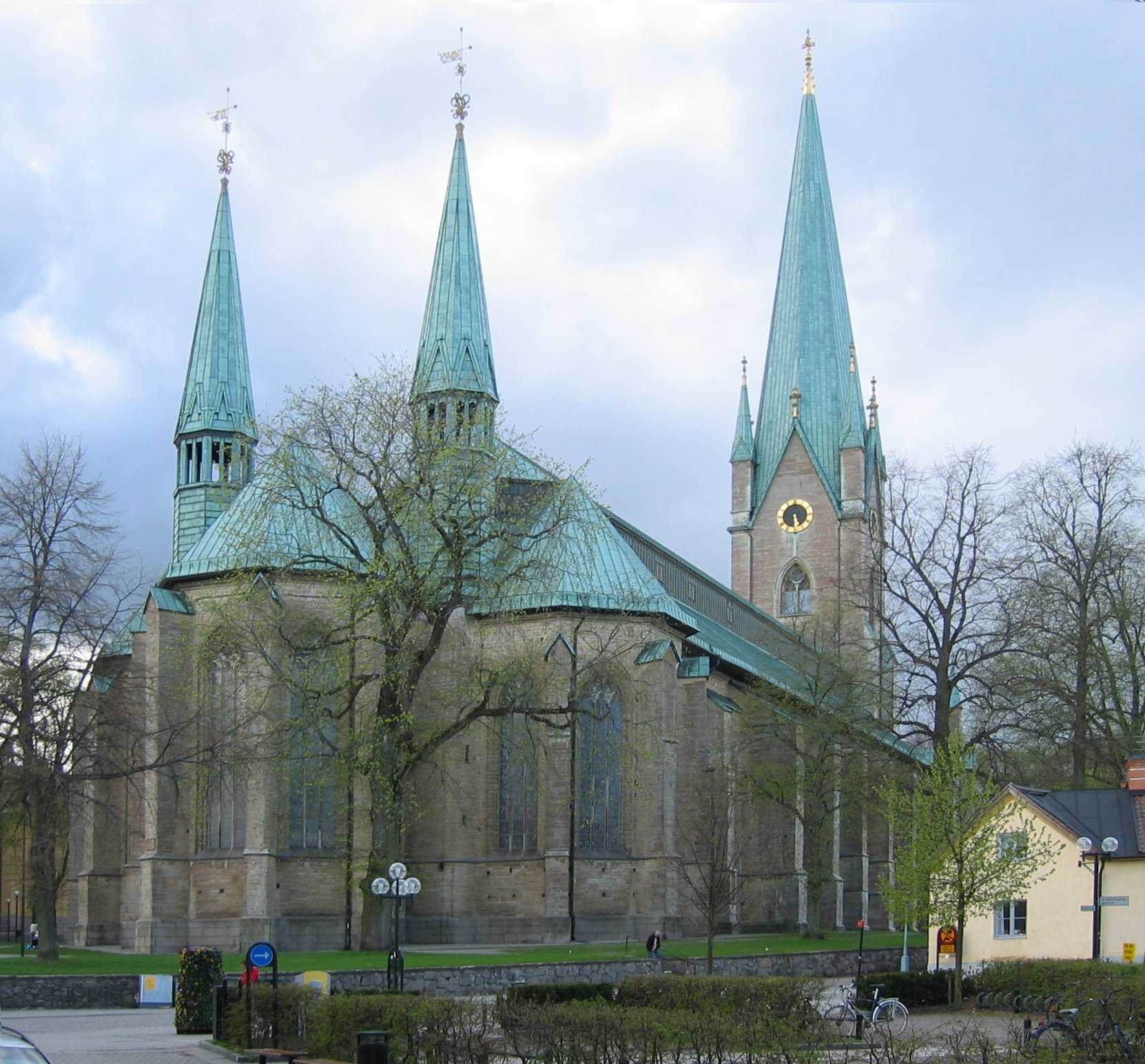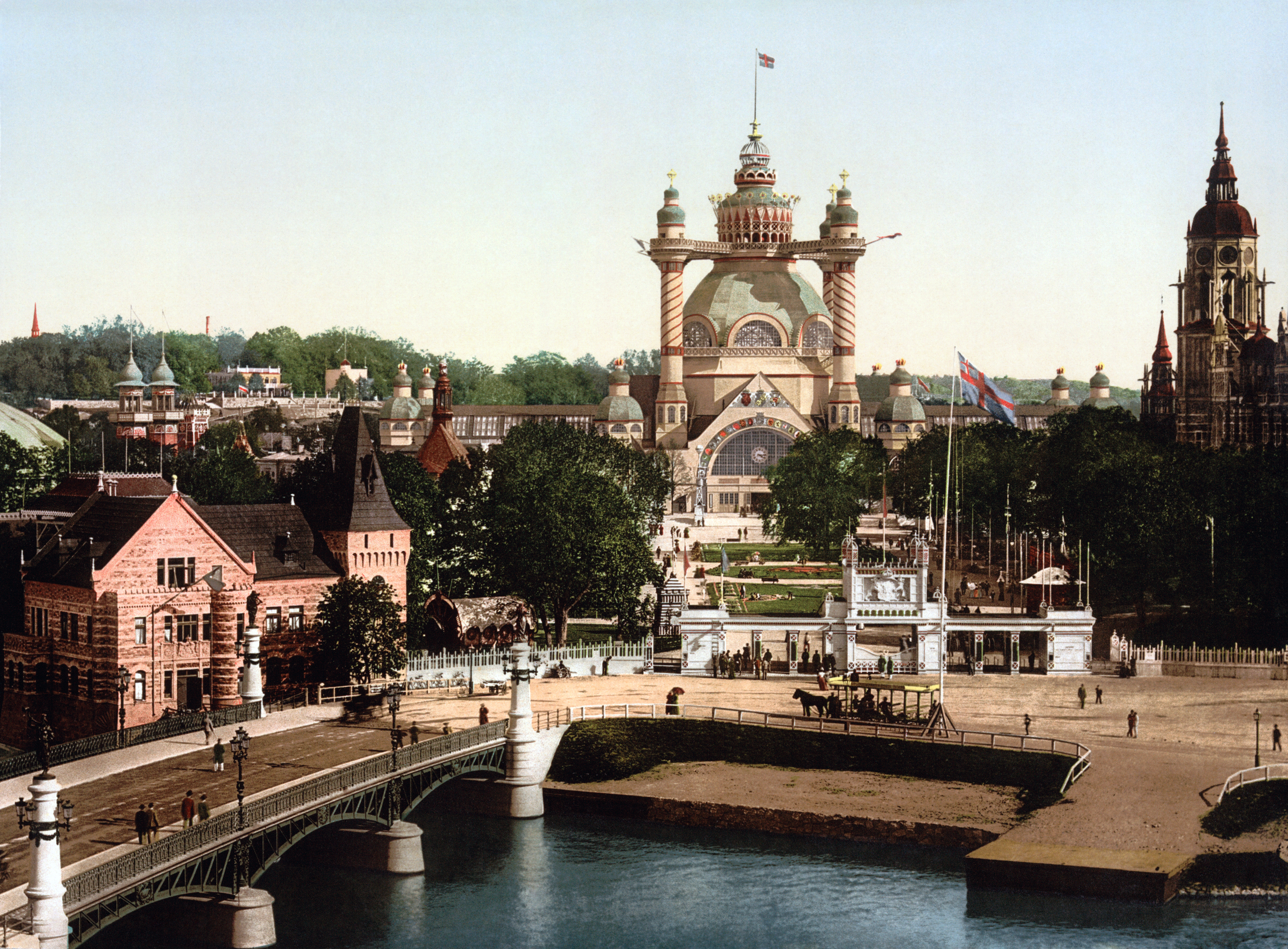|
Djurgården, Linköping
Djurgården is a city district between Garnisonen and Lambohov in Linköping, which is the process of being developed. It is meant to contain 3 000-5 000 housing units, 200,000 to 300,000 square metres of office space and 30,000 square metres of commerce. Construction start for Djurgårdens centre, the first area in the district, is estimated to be in 2011. The name Djurgården originates from 1606 when it was a royal hunting park with deer and fallow deer. It was John III's and Gunilla Bielke's son Duke John of Östergötland who had it built. Djurgården was expanded in 1616 and was in operation until the early 1700s, when the live deer were transported by sled to the then new Djurgården in Stockholm Stockholm () is the Capital city, capital and List of urban areas in Sweden by population, largest city of Sweden as well as the List of urban areas in the Nordic countries, largest urban area in Scandinavia. Approximately 980,000 people liv ..., that Charles XI had built ... [...More Info...] [...Related Items...] OR: [Wikipedia] [Google] [Baidu] |
Garnisonen
Garnisonen ("Garrison") is a city district in Linköping, which was previously the site of the two military units closed down in July 1997, Life Grenadier Regiment (I 4) and Svea Artillery Regiment (A 1). In 2000, the district was formed by division of Ekkällan. The area is still under development, and there are homes, schools, recreation centers, grocery stores, offices and more. There are also many public sector agencies such as Linköping District Court, Police, Prosecutor's office, Probation Service and the Swedish National Laboratory of Forensic Science. In the western part of the area is a Garrison Museum. The number of inhabitants in December 2008 was 1070. Districts adjoining Garnisonen are East Valla, Ekkällan, Ramshäll, Berga and Djurgården Djurgården ( or ) or, more officially, ''Kungliga Djurgården'' (), is an island in central Stockholm, Sweden. Djurgården is home to historical buildings and monuments, museums, galleries, the amusement park Gröna Lun ... [...More Info...] [...Related Items...] OR: [Wikipedia] [Google] [Baidu] |
Lambohov
Lambohov () is a Swedish city district in southwestern Linköping. It is also the name of the manor around which the district has evolved. The district grew in the 1980s and over 50% of the buildings were erected from 1981 to 1990. Initially it was characterized by a mix of different forms of housing, such as houses alternating with low apartment buildings. Lambohov currently has nearly 8,000 inhabitants. It is customary to divide Lambohov into several parts. Eastern Lambohov seen as a fairly quiet area and contains a lot of houses. Western part as well, with houses and more expensive rental units. The southern part is the older rental properties and also some concrete buildings. In Lambohov Centre there is also a youth club. Lambohov is formally divided into the three parts Slestad, Änggården and Little Mjärdevi. The municipality is planning new construction, and much has been built, in the eastern Lambohov. Lambohov adjacent to the campus of Linköping University and Mjärd ... [...More Info...] [...Related Items...] OR: [Wikipedia] [Google] [Baidu] |
Linköping
Linköping () is a city in southern Sweden, with around 105,000 inhabitants as of 2021. It is the seat of Linköping Municipality and the capital of Östergötland County. Linköping is also the episcopal see of the Diocese of Linköping (Church of Sweden) and is well known for its cathedral. Linköping is the center of an old cultural region and celebrated its 700th anniversary in 1987. Dominating the city's skyline from afar is the steeple of the cathedral, Domkyrka. Nowadays, Linköping is known for its university and its high-technology industry. Linköping wants to create a sustainable development of the city and therefore plans to become a carbon-neutral community by 2025. Located on the Östergötland Plain, Linköping is closely linked to Norrköping, roughly to the east, near the sea. History The city is possibly named after the '' Lionga ting'' assembly which according to Medieval Scandinavian laws was the most important thing in Östergötland. Exact location ... [...More Info...] [...Related Items...] OR: [Wikipedia] [Google] [Baidu] |
John III Of Sweden
John III ( sv , Johan III, fi, Juhana III; 20 December 1537 – 17 November 1592) was King of Sweden from 1569 until his death. He was the son of King Gustav I of Sweden and his second wife Margaret Leijonhufvud. He was also, quite autonomously, the ruler of Finland, as ''Duke John'' from 1556 to 1563. In 1581 he assumed also the title Grand Prince of Finland. He attained the Swedish throne after a rebellion against his half-brother Eric XIV. He is mainly remembered for his attempts to close the gap between the newly established Lutheran Church of Sweden and the Catholic church, as well as his conflict with, and murder of, his brother. His first wife was Catherine Jagellonica of the Polish-Lithuanian ruling family, and their son Sigismund eventually ascended both the Polish-Lithuanian and Swedish thrones. Biography John was the second son of Gustav Vasa (1523–60). His mother was Margaret Leijonhufvud (1514–51), a Swedish noblewoman. Gustav had placed his son in Finland ... [...More Info...] [...Related Items...] OR: [Wikipedia] [Google] [Baidu] |
Gunilla Bielke
Gunilla Bielke; Swedish: ''Gunilla Johansdotter Bielke af Åkerö'' (25 June 1568 – 19 July 1597) was Queen of Sweden as the second wife of King John III. Queen Gunilla is acknowledged to have acted as the political adviser to John III and to have influenced his religious policies in favor of Protestantism. Early life Gunilla Bielke was the daughter of the cousin of John III, the former governor of Östergötland Johan Axelsson Bielke, and Margareta Axelsdotter Posse. Orphaned early, she was raised at the royal court since she was ten years old as a playmate of the King's daughter, Anna. In 1582, she was made maid of honour to the Queen, Catherine Jagellon. About half a year after the death of his first queen in 1583, John III chose her to be his next consort, after first having considered Sigrid Brahe. Bielke is described by her contemporaries as a beautiful blonde, though the portraits preserved by her are considered to be too stylistic to give a true image of her appearance ... [...More Info...] [...Related Items...] OR: [Wikipedia] [Google] [Baidu] |
John, Duke Of Östergötland
John of Sweden, Duke of Östergötland (in Swedish ''Johan'') (18 April 1589 at Uppsala Castle – 5 March 1618 at Bråborg Castle in Östergötland) was a Swedish royal dynast. He was titular Duke of Finland 1590–1606 and reigning Duke of Östergötland 1606–18. His father was John III of Sweden and his mother was Gunilla Bielke. John's half-brother was King Sigismund III of Poland (1566–1632, reigned in Sweden in 1592–99, and in the Polish–Lithuanian Commonwealth in 1587–1632). His uncle was Charles IX of Sweden, who ruled from 1599 to 1611, and his first cousin was Gustav II Adolf of Sweden (1594–1632). Biography Early life At the age of one, the baby John was created Duke of Finland,Note that during 1590-1599 his father and half-brother continued to call themselves Grand Dukes of Finland. Se Titles of European hereditary rulers Count of Åland, and Count of Bråborg. He was tutored together with his first cousin, the five-years-younger hereditary princ ... [...More Info...] [...Related Items...] OR: [Wikipedia] [Google] [Baidu] |
Djurgården
Djurgården ( or ) or, more officially, ''Kungliga Djurgården'' (), is an island in central Stockholm, Sweden. Djurgården is home to historical buildings and monuments, museums, galleries, the amusement park Gröna Lund, the open-air museum Skansen, the small residential area ''Djurgårdsstaden'', yacht harbours, and extensive stretches of forest and meadows. It is one of the Stockholmers' favorite recreation areas and tourist destinations alike, attracting over 10 million visitors per year, of which some 5 million come to visit the museums and amusement park. The island belongs to the National City park founded in 1995. Since the 15th century the Swedish monarch has owned or held the right of disposition of Royal Djurgården. Today, this right is exercised by the Royal Djurgården Administration which is a part of the Royal Court of Sweden. A larger area of the city, separated from Djurgården proper by Djurgårdsbrunnsviken is Norra Djurgården (''Northern Djurgården''), ... [...More Info...] [...Related Items...] OR: [Wikipedia] [Google] [Baidu] |
Stockholm
Stockholm () is the Capital city, capital and List of urban areas in Sweden by population, largest city of Sweden as well as the List of urban areas in the Nordic countries, largest urban area in Scandinavia. Approximately 980,000 people live in the Stockholm Municipality, municipality, with 1.6 million in the Stockholm urban area, urban area, and 2.4 million in the Metropolitan Stockholm, metropolitan area. The city stretches across fourteen islands where Mälaren, Lake Mälaren flows into the Baltic Sea. Outside the city to the east, and along the coast, is the island chain of the Stockholm archipelago. The area has been settled since the Stone Age, in the 6th millennium BC, and was founded as a city in 1252 by Swedish statesman Birger Jarl. It is also the county seat of Stockholm County. For several hundred years, Stockholm was the capital of Finland as well (), which then was a part of Sweden. The population of the municipality of Stockholm is expected to reach o ... [...More Info...] [...Related Items...] OR: [Wikipedia] [Google] [Baidu] |
Charles XI Of Sweden
Charles XI or Carl ( sv, Karl XI; ) was King of Sweden from 1660 until his death, in a period of Swedish history known as the Swedish Empire (1611–1721). He was the only son of King Charles X Gustav of Sweden and Hedwig Eleonora of Holstein-Gottorp. His father died when he was four years old, so Charles was educated by his governors until his coronation at the age of seventeen. Soon afterward, he was forced out on military expeditions to secure the recently acquired dominions from Danish troops in the Scanian War. Having successfully fought off the Danes, he returned to Stockholm and engaged in correcting the country's neglected political, financial, and economic situation. He managed to sustain peace during the remaining 20 years of his reign. Changes in finance, commerce, national maritime and land armaments, judicial procedure, church government, and education emerged during this period. Charles XI was succeeded by his only son Charles XII, who made use of the well-tra ... [...More Info...] [...Related Items...] OR: [Wikipedia] [Google] [Baidu] |


_c_1588.jpg)


_en2.png)